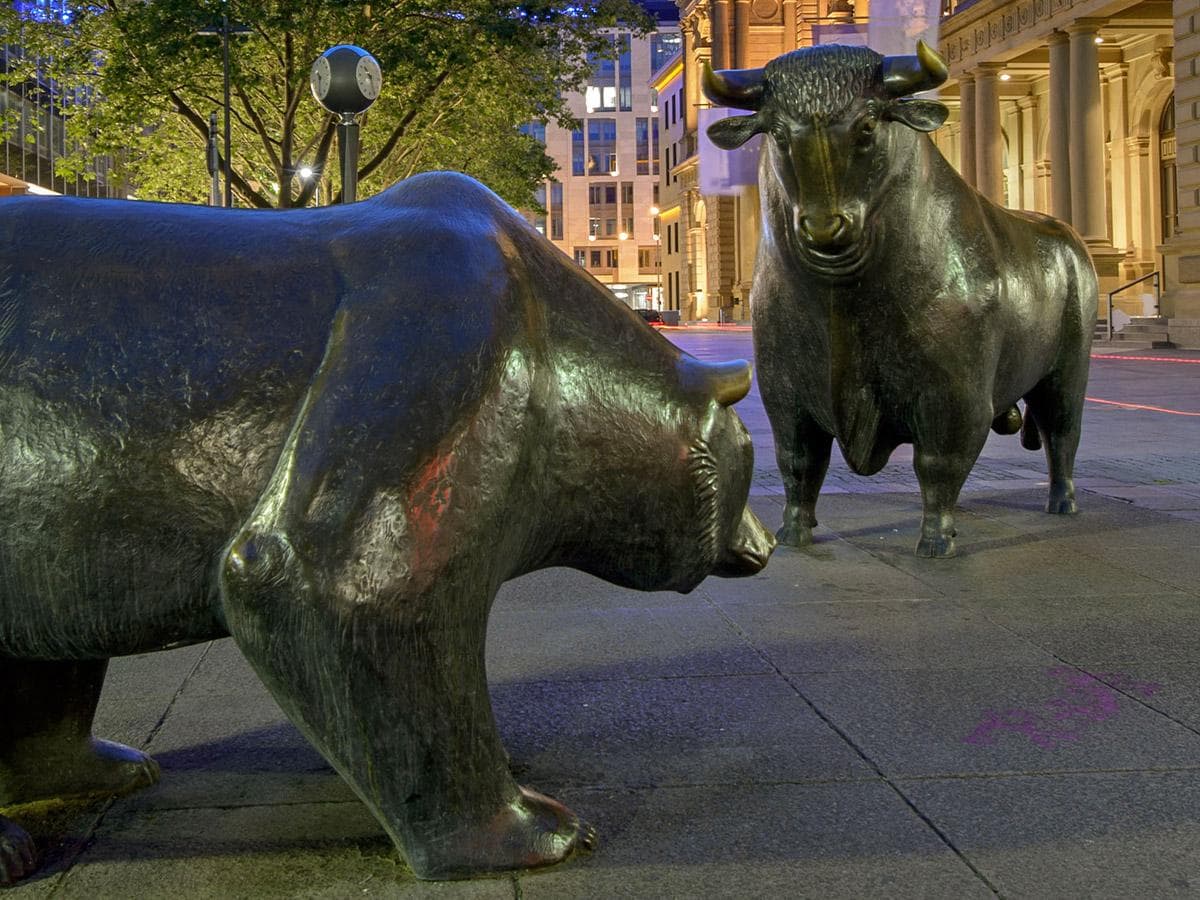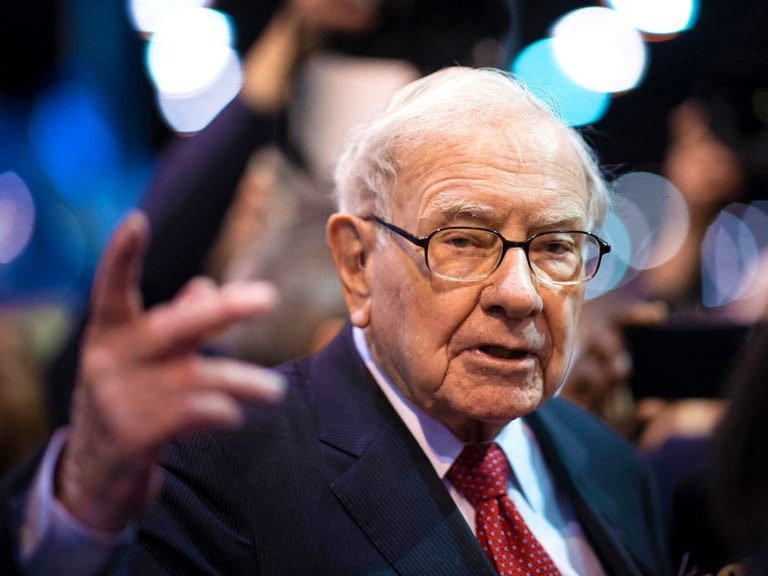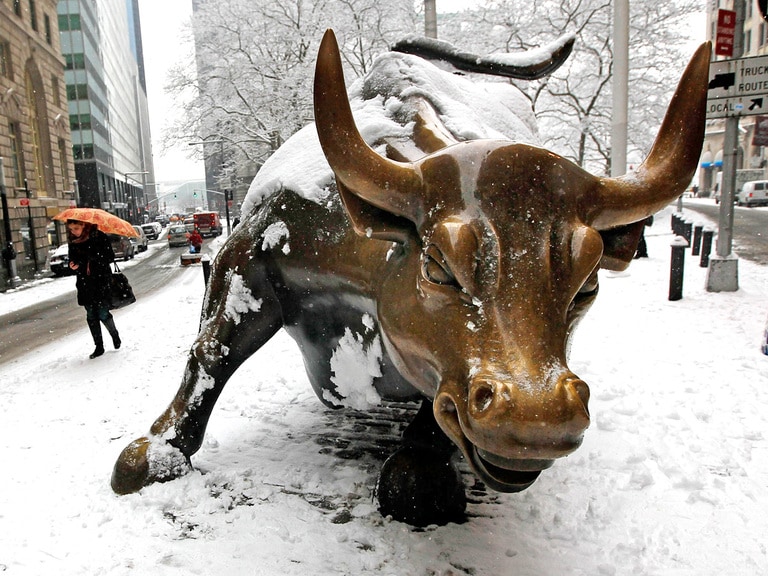On the 11 March, the Dow Jones Industrial Average [DJI] entered bear market territory. After 11 years, the raging bull was finally felled. The killer? COVID-19, which had been terrifying governments and markets since its outbreak in Wuhan earlier in the year, was finally named a pandemic by the World Health Organisation.
On that day the Dow Jones index dropped to $23,553.22, ending 20% its last record high of $29,551.42. When the Dow hit this key threshold — albeit one of many — analysts around the world knew that what they had long expected had happened. The old bull had become a bear, by one standard at least.
The reason for the Dow Jones’ huge sell-off is clear — intense worry about the impact the coronavirus will have on the US and global economy. As workers stay isolated at home, businesses and social and economic infrastructure will come under huge strain.
In a terrible piece of timing the markets have also been hit by a plunging oil prices caused by a heated conflict of words and policies between major producers Saudi Arabia and Russia.
A history lesson
This slump marked the end of the longest bull run on record, but more significantly, it was the quickest ever transition to bear territory in its history. In a recent article for the Irrelevant Investor Michael Batnick, director of research at Ritholtz Wealth Management, outlined all the Dow Jones declines of 20% of more from all-time highs dating back to 1915.
He found that the average number of days from peak to bear market territory was 255 and the median 156. This time the reversal took just 20 trading days.
20days
How long it took for the Dow to drop into a bear market
The next fastest slide had not occurred for 90 years. This happened in 1929, when the Great Crash contributed to a 36-session drop.
“Every bear market presents its own set of challenges, but this one has been particularly unpleasant,” Batnick wrote.
Recession fears
Over the last couple of days there has been tentative signs of stabilisation in the Dow Jones and other markets as the US government agreed on a $2trn stimulus package. This includes assistance to SMEs, critical industries such as airlines and support for people and businesses affected by pandemic.
On Tuesday’s close, as investors prepared for the ratification of the agreement, the Dow Jones registered its fourth best day in history, climbing 11.3% in one day. It remained positive on Wednesday, closing up 2.39%.
However, in such uncertain times, whether this can be sustained is difficult to predict.
“The biggest challenge would be for the central banks and governments to protect and sustain the economy as much as they can following the worldwide outbreak of COVID19,” Teodor Dilov, Fund Analyst at Interactive Investor tells Opto.
“The biggest challenge would be for the central banks and governments to protect and sustain the economy as much as they can following the worldwide outbreak of COVID19” - Teodor Dilov, Fund Analyst at Interactive Investor
“Unfortunately, the latest interest rate cuts and asset purchase packages failed to impress and did not manage to calm down the markets, which would put further pressure on corporates. Demand is expected to slow down and that undoubtedly could hit earnings.
“Furthermore, the data also suggests that the markets are pricing in a technical recession, meaning there is an expectation for the economy to shrink for two consecutive quarters.”
A recent poll conducted by Reuters gave a median 80% chance of a US recession this year. Furthermore, JPMorgan Chase forecasts that US GDP will shrink by an annualized rate of 14% in the second quarter. As such the unemployment rate will go up from 3.5% to 6.25% by the middle of the year before dropping back to 5.25% by the end of 2020, according to reports.
Meanwhile in mid-March, Goldman Sachs predicted that US GDP will drop 5% in the second quarter.
5%
Predicted US GDP drop in Q2
A positive message?
“It is no surprise to learn that the US stock market trades on much higher multiples of earnings and a much lower dividend yield than Europe,” Russ Mould, investment director at AJ Bell, tells Opto.
“Indeed, before the rout began, the US was trading at levels only seen near the peaks of 1929 and 2000, in terms of market cap to GDP and Professor Robert Shiller’s cyclically adjusted price earnings (CAPE) ratio. Neither of those episodes ended well, either,” Mould explains.
“And yet betting against the US is rarely a good idea for long. He noted that the US would be likely to enact stimulus measures — now enacted ‚— more quickly than the EU, and that the recovery would also be quicker. “Though this is not to forget that US equities still trade at valuations that look dangerous in the event of a prolonged downturn in economic activity and corporate earnings,” he warned.
Many investors are using this uncertain time to seek out opportunities.
“Active investors are using this to maybe pick up what might be perceived as bargains because nobody's really sure how to value stocks right now," Robert Pavlik, chief investment strategist and senior portfolio manager at SlateStone Wealth LLC in New York, told Reuters.
“Despite fear investors should think to the future, beyond the economic pause and when business and life resumes normalcy. Thinking 5, 10 years down the road could prevent that regrettable knee-jerk selling reaction and reveal potential buying opportunities." Greg McBride, chief financial analyst at Bankrate.com, told Fortune.
“Despite fear investors should think to the future, beyond the economic pause and when business and life resumes normalcy. Thinking 5, 10 years down the road could prevent that regrettable knee-jerk selling reaction and reveal potential buying opportunities” - Greg McBride, chief financial analyst at Bankrate.com
What seems certain is that investors will have time to ponder their next move. It may be some time until the Dow Jones hits its previous highs again.
Disclaimer Past performance is not a reliable indicator of future results.
CMC Markets is an execution-only service provider. The material (whether or not it states any opinions) is for general information purposes only, and does not take into account your personal circumstances or objectives. Nothing in this material is (or should be considered to be) financial, investment or other advice on which reliance should be placed. No opinion given in the material constitutes a recommendation by CMC Markets or the author that any particular investment, security, transaction or investment strategy is suitable for any specific person.
The material has not been prepared in accordance with legal requirements designed to promote the independence of investment research. Although we are not specifically prevented from dealing before providing this material, we do not seek to take advantage of the material prior to its dissemination.
CMC Markets does not endorse or offer opinion on the trading strategies used by the author. Their trading strategies do not guarantee any return and CMC Markets shall not be held responsible for any loss that you may incur, either directly or indirectly, arising from any investment based on any information contained herein.
*Tax treatment depends on individual circumstances and can change or may differ in a jurisdiction other than the UK.
Continue reading for FREE
- Includes free newsletter updates, unsubscribe anytime. Privacy policy





